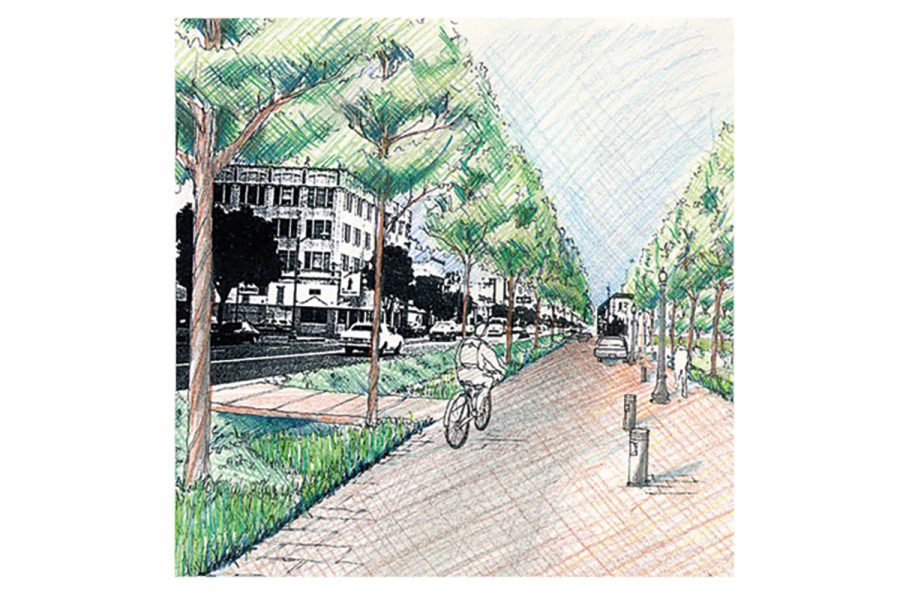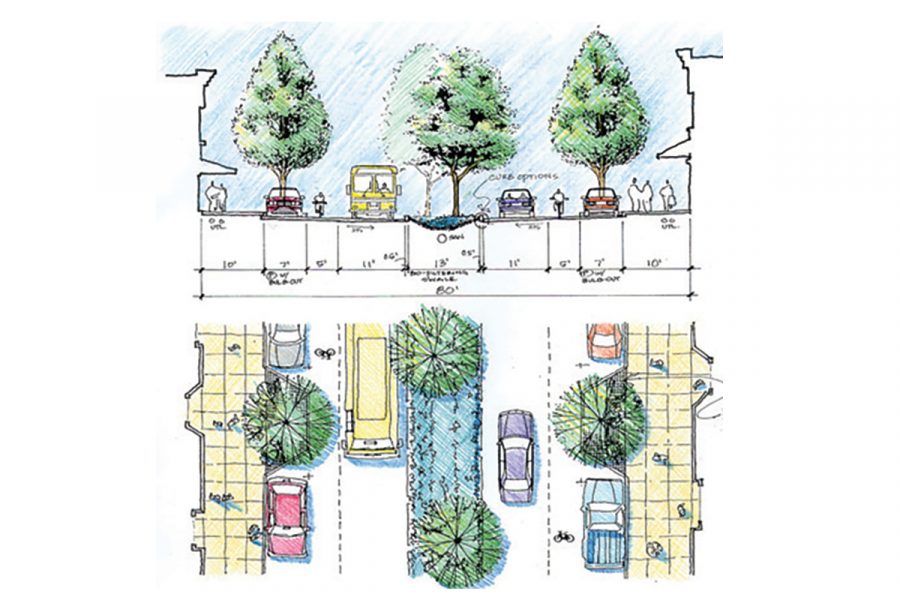Green Streets: Environmental Design for Transportaion
Portland, Oregon






Client: City of Portland
Role: Lead Consultant
Project Duration: 2000 – 2001
Key Features
- One of the first Green Streets guidance documents created in the United States
- Overviews water quality implications of streetscape designs
- Methodology for pairing prime green streets solutions with specific site conditions of the man-made and natural environments
Description
CD+A led a multidisciplinary team in developing the “Green Streets” Best Management Practices Handbook for the Portland Metro Region. The Handbook utilizes expertise in the linkages between land use and transportation to examine the integration of man-made and natural systems and stormwater management and treatment. The Handbook was used as a threshold requirement for projects nominated for regional funding and used to address Federal 4(d) “taking” provisions of the Endangered Species Act in relation to Coho Salmon and Steelhead Trout. It also directly addresses the water quality implications of overlaying a well-connected street pattern onto an existing stream system within the region’s urban land reserve.
The Handbook begins with an educational component that introduces various concepts and precedents related to both stormwater management issues and street design. It then details design solutions and a methodology for matching particular solutions to specific site conditions such as topography, soil type, street type, as well as man-made conditions. The Handbook further proposes new street connectivity provisions for adoption into regional and local plans that address tradeoffs between stream protection and an efficient, multimodal transportation system.
CD+A met regularly with a technical advisory committee comprised of representatives from local jurisdictions, state and federal agencies, service providers, and environmental advocates and attended sessions with local traffic and stormwater engineers to listen to, gather, and incorporate their concerns and advice. CD+A also participated and presented project results in a Green Streets Summit attended by 150 regional policy-makers.
